NMK’s GunNail is an often overlooked shooter. Released around the 1992/1993 period the visual style always reminded me of a mix of Toaplan’s Dogyuun and NMK’s own Thunder Dragon 2, both of which were released around the same period.
Maybe it gets overlooked because for scoring purposes it’s a little broken. The game substitutes the usual ‘lives’ system for a ‘shields’ system, rewards you more for playing with only a single shield left, but also plays a loud incessant warning siren the entire time that condition is met.
Maybe it gets overlooked because it’s wildly inconsistent. While all the stages are well designed there doesn’t appear to be any reason of rhyme to them; some bosses are even conditional and won’t spawn if you don’t play the stages properly, while the majority will spawn regardless.
Either way, a prototype of the game was recently dumped by CPsystem3 and trap15. Prototypes can often tell us things about the development of a game and help explain things that don’t make a great deal of sense, so what does this one tell us?
Well first off, just like the release version, it contains a “28 May 1992” string in the ROM. This isn’t too significant, in the majority of cases for NMK games all revisions contain the same string, so it clearly isn’t the release date. One of the only exceptions is actually a single Thunder Dragon 2 set which is starting to look out of place to the point where I wonder if the one with the different string has actually just been hacked.
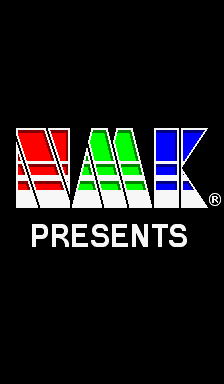
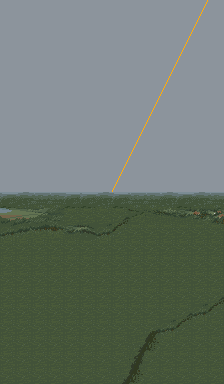
(Left, release version | Right, prototype)
Well first off, the introductory screen is different. The large NMK logo isn’t there, but instead we get this odd screen of a laser being fired against an otherwise empty landscape, followed by a large explosive shockwave. For a game that doesn’t attempt to tell any kind of story this seems out of place, not fitting with anything in the game. It’s no real surprise that it was dropped.
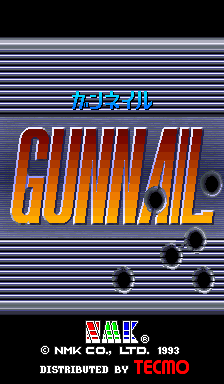
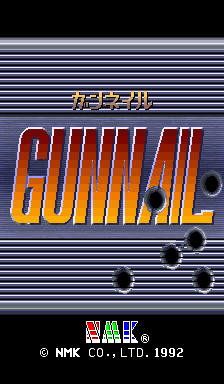
(Left, release version | Right, prototype)
The title logo, when set to Japan does not display the Tecmo license in the prototype set, the tiles are there, but unused. No, the title isn’t changed to Nailgun, although I felt that to be a witty and appropriate title for the article due to nature of the rest of the changes.
Rest of the changes? Well, yes, if those minor details were the only differences here I wouldn’t be covering this prototype, but those certainly are not the only differences. trap15 was kind enough to supply a list of changes he had personally observed, which I have pasted below.
– Different introduction scene
– Many unique enemy types that ended up unused
– Tweaked enemy attack patterns
– Tweaked boss behaviour and attack patterns
– Dramatically different stages (and only 7 of them):
– Stage 1: Became Stage 5, very different layouts
– Stage 2: Became Stage 7, with mostly slight enemy layout changes
– Stage 3: Became Stage 6, almost the same as final
– Stage 4: Stayed as Stage 4, with very minor enemy layout changes
– Stage 5: Entirely unique stage, majorly reworked to become final Stage 2
– Stage 6: Became Stage 3, many enemy layout changes
– Stage 7: Entirely unique stage, majorly reworked to become final Stage 1
– No ending, instead loops forever
– Loop has extremely fast bullets
– The difficulty seems the same on all loops
– Player’s blue shot has a wider maximum and minimum spread
– Player’s main shot hitbox is symmetrical and wider than final
– When the hitbox was shrunk for the final, it was only shrunk in one direction, making it extended to the right
In short, there are a lot of changes, and yes, some of them explain oddities but in practice it means that playing this version of the game feels more like playing a remixed version than playing a prototype, everything is in a different order and rearranged.
I think it’s fair to say that the game was already far into development at the point this prototype was made, possibly only a month or two before release. The graphics ROMs, aside from the 8×8 tilemap were already finalized, the sound program was finalized, as were all the sample ROMs, so all difference in content come from the program ROM and which assets contained within the already finalized graphics ROMs the programmers wanted to make use of.
While trap15 asserts that the prototype only has 7 levels, work on the 8th, final level was already well underway, and you can hack the code to display it. If you do so the enemies are incorrectly coloured and there’s no Final Boss to defeat, but the backgrounds, overall sequence control and certain interactive elements contained within the level are already present. The lack of a final boss does likely explain why this version simply loops back to stage 1 instead of going to stage 8. If you do use hacks to play stage 8 in the prototype the (missing) boss sequence will eventually time-out and you’ll end up on another level which is an invalid mix of enemy patterns from one stage and backgrounds from another but it quickly softlocks. This suggests no ending was programmed at this point either, again likely explaining why the game just loops instead.
The stage order changes are probably the most curious thing here, and the extent of them suggests that the developers of the game weren’t really sure what order they wanted the stage to be in, either that, or the order presented her was specifically chosen for a show / location test to highlight certain things, rather than present a natural flow, although the difficulty balance of the stages does suggest maybe it was originally intended to be closer to what’s on offer here – the changes made to the final stage, which was to later become the first stage are extensive, throwing away a lot of work, yet at the same time the first stage presented here doesn’t flow well from the initial launch sequence.
That stage is probably a good starting place anyway

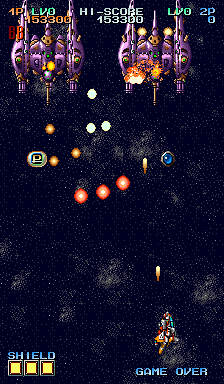
(Left, release version, base near start | Right, prototype, extra enemies + starfield section)
As soon as the stage starts you can see an immediate difference. The release version scrolls quickly to the ground-base, offering some weak air targets. The prototype version has a much longer star scroll with several tough enemies prior to the ground-base section.
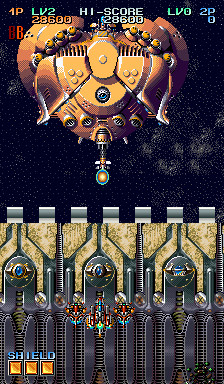
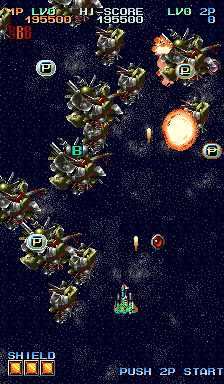
(Left, release version, boss straight after base | Right, prototype, barrage of enemies)
The whole stage has different enemy patterns, but one noticeable thing missing in the final version is this asteroid like field of enemies prior to the boss. The is also one of those conditional bosses where if you don’t meet stage conditions it fails to appear. This almost makes more sense if it were intended to be a later boss as it is in the proto, but it’s also the first demo to appear in the game attract sequence, meaning that in the prototype version you see what is the final boss of the prototype without even having to play the game, again suggesting it probably wasn’t intended as a late boss as that would be anticlimactic for the player.
Looking at level 2 from the final, which is level 5 in the proto shows very similar differences. The prototype start off in space with several small floating islands, and many enemies before you get to the main water-based island. As this is the 5th level that makes sense.
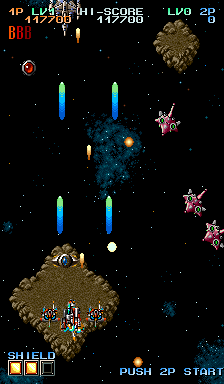
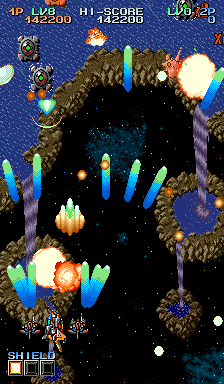
(prototype – early start, small floating islands, lots of enemies)
For the final build of the game the early part of the stage is cut entirely, starting you at the larger floating island with the waterfalls, even giving you a breather before any enemies spawn.

(release version – no smaller floating islands, fewer enemies)
Of all the stages this one is probably the one where it’s easiest to see just how much was changed. In the final version the stage is very short, it opts for a ‘base’ section with the sea on the left, and base on the right, the enemies are generally those seen elsewhere.

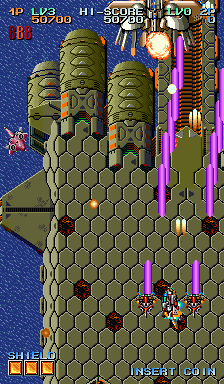
(release version – left/right divide of water and base, standard enemies)
The prototype instead divides the stage into several more distinct segments, with sections consisting entirely of sea and entirely of land base, with specific enemies that fit with the backgrounds. Just like with the previous stage, there’s also a barrage of enemies right before the boss, this time some missile type enemies.

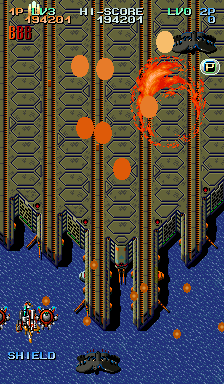
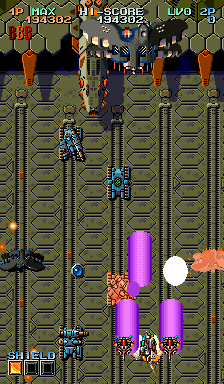
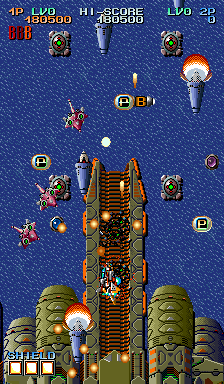
(prototype version – stage divided into water / base segments, unique enemies)
As you can see, this is a non-trivial amount of level content that ended up being cut for the final game.
The two timed levels, 3 and 6 are the ones that were simply swapped around, so you still have timed levels in the same place, but as mentioned, there are layout and enemy changes to accommodate their difference placement here. In general the stages are less complex, so there much to show in screenshots tho.
Level 5 in the final, which is level 1 in the prototype does have some of the tougher enemies in the final (recoloured versions of ones that were scrapped from the stage that ended up as stage 1) but it also seems to use fewer platforms in the background in the approach to the boss. I don’t know if this was done to make the boss walking up the screen move obvious, but again it makes the final game seem a little empty compared to the prototype.
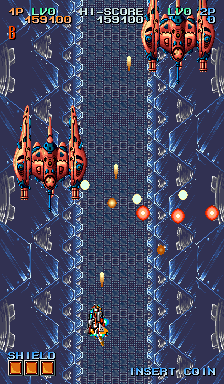
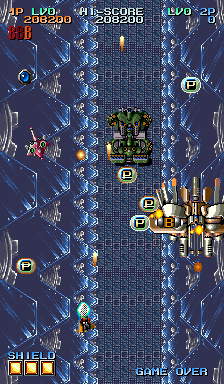
(release version – tougher enemies that were removed from other stage)
With the prototype you can see it has easier enemies, but it’s a lot busier, unusual for a first stage. This stage is generally interesting because it has the whole boss march thing, and the stage transition where you drop down before the boss. Typically you see this kind of thing on the later levels of shooters, although trap15 mentions that, based on discussions with the original developer, this was intended to tie in to a story as the first level. My gut feeling would have instead been that maybe it was considered one of the more technically impressive levels they wanted to show off early in the location test.


(prototype version – easier enemies, but more going on)
There are more level changes than I could possibly cover here, and things like rank, and the conditional bosses make it difficult to simply show the levels as a series of screenshots, but rest assured, if you’re familiar with the level layouts from the original these prototype ones will surprise you and in many cases provide a good chunk of additional content which was subsequently cut from the game. It feels very much like there wasn’t enough development time left to flesh out the newly established later levels once things had been moved around, or simply a case of the existing assets not really fitting as they’d all been designed for stages which were now much earlier, and shorter in length – clearly an issue if you finalize your art assets too early.
Moving on from the level layouts, the detail trap15 picks out about the shot hitboxes is interesting too, and while I doubt anybody aside from an experienced player is going to have noticed the change it does suggest that it was a rushed, last minute decision as there’s little excuse for having a wonky hitbox on your bullets. This was likely part of some late difficulty tuning, as a smaller shot hitbox makes it more difficult to hit enemies with your shots.
I’m not knowledgeable enough about the game myself to detail the different boss patterns and attacks, nor am I aware of every enemy type used in each version of the game to cover the specific ones that are used in the prototype but go unused in the final – that’s more the level of detail you’d associate with an article on The Cutting Room Floor (and this would be ideal material for one) but if you’re a fan of GunNail then this prototype is worth checking out.
Even with the additional development background provided by the prototype a lot of things about the game still don’t make much sense, it seems fairly clear that the developers didn’t have a solid vision for things like stage order, or at least never got around to implementing any kind of story to tie it all together, which probably explains why even in the final game the overall flow feels a little like it was thrown in a blender, but none of that stopped that from being an enjoyable game and one that doesn’t deserve to be overlooked in a crowded genre. The prototype enhances things, giving the game more of a fighting chance of standing out, and I feel does manage to provide a more enjoyable experience as a larger amount of the content is used. It appears likely many of the stage designs found here are closer to as originally intended, prior to location test feedback forcing changes.
How interesting a prototype is often depends on how chaotic the development process was. Maybe in this case we were lucky to see the game released at all, it feels like the budget wasn’t quite there for what the developers had envisioned, and that location test feedback meant further changes that disagreed with the original vision had to be made, long after that had been finalzied. I’ve often felt that location testing, beyond simply ensuring that the game didn’t have major bugs ultimately led to poorer quality games as players are often going to be at odds with the development vision, preferring things they’re already familiar with, and not really having an understanding of the internal process and how difficult it can be to make major content changes late in development. We’ve seen similar elsewhere, with prototypes providing a more memorable experience than the final games, LED Storm comes to mind, a game which seemed to get progressively more generic with each iteration, but also things like Trog, and the Android prototypes that appeared a few years ago all follow a path whereby the later versions of the game ended up much more forgettable.
Unrelated to this post, but it seems to go under the radar that NMK, UPL and Jaleco games are an area where we’ve not yet seen any real results from decapping efforts; for protection many of them use MCU types where dumping attempts have failed, or even where the MCUs might not actually be what we believe them to be. Games like Thunder Dragon, Hacha Mecha Fighter and Task Force Harrier actually have some pretty extensive protection on the original PCBs, and while we have simulations partially based on bootlegs and unprotected versions it would be great to one day see those devices properly dumped and emulated. It will be interesting to see if the new year brings any new developments in this field.
Again thanks to CPsystem3 for buying and dumping the PCB of this and trap15 for his preliminary analysis of it.